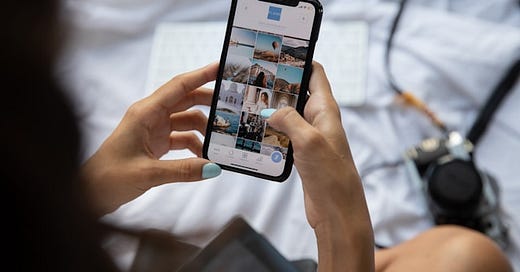Have you ever opened a social media feed only to suddenly notice that two hours have passed? If you have fallen down the rabbit hole of cat and ASMR videos and wasted an hour (or maybe Two) then you are not alone.
The urge of infinite scrolling is more dangerous and widespread than we perceive it to be. Whether we are at work or home, we always find ourselves compelled to unlock the phone to digest the diverse contents of reels, shorts, and social media posts. The usage of social media at work for non-work related activities has become so widespread that a special term is introduced to describe it – Cyberloafing [1].
The infinite scrolling pattern we use today on the Internet and Mobile Apps was designed by Engineer Aza Raskin in 2006 to optimize page loading and make web content more accessible[2].
However, as the internet and website content grew in size to sheer proportions, the information overload on users also increased. The introduction of algorithms almost two decades ago enabled the generation and suggestion of user-specific content based on the apparent interests and likes of users.
In 2019, after watching his creation turn into an unrecognizable monster that feeds on human attention Raskin tweeted:
“One of my lessons from Infinite Scroll: that optimizing something for ease-of-use does not mean best for the user or humanity [3]”
The introduction of Artificial Intelligence and algorithms triggered a monumental shift in the computational capability of social media platforms. As a direct consequence, social media platforms were able to generate user-specific feeds. It essentially implies that the news or video feed on Facebook or TikTok will differ for me and my friends based on our browsing histories and apparent likes and dislikes that we reveal in the form of likes, comments, and re-watching posts.
So the key question is – Why do we keep scrolling so much despite being fully aware that we might be wasting our precious time?
Social media platforms have conducted extensive research on human behavior to exploit the biases in our decision-making apparatus.
The first exploit is quite simple. Humans are naturally designed to seek predictability and identify patterns. In their absence, we search for them and eventually create them. Social media platforms offer a wide array of opinions and topics. As we browse, our brain collects information and tries to arrange it systematically to arrive at a predictable conclusion. However, the nature of the content is such that there is no linkage of one reel or post to the others. So we keep doom-scrolling to find patterns in information when no such pattern exists.
The second exploit is tricky. Every human wants to connect to others and seeks social validation. Once we create an account on social media, its ‘profile’ section is our virtual space within that community. Whenever we get likes through notifications, our brain interprets such notifications as social validation and releases dopamine that makes us ‘feel good’. Hence, without engaging with others through a physical or in-person connection, we hack the brain circuits to assume that we are socially dominant and that our opinions matter. Research also suggests that for activities where the reward isn’t guaranteed (like social media reels of cats, ASMR videos, traveling, nature, etc), we gamble and watch more content in an attempt to find that perfect reel or post that gives us a quick rush of dopamine and pleasure. It is like when a person gambles and loses. Subsequently, to recover the lost principal amount, he gambles even more only to find out that he lost even more money.
So prevalent is that pandemic of infinite scrolling that someone created and named an entire model to emulate its process – The Hook Model [4]. This model states that when we see a notification, we are prompted to check our social media, where we are rewarded with a like or comment, so we are motivated to keep watching them.
Most recently, high consumption of continuous social media feeds that are bombarded with images and stories is linked directly to several mental health concerns including clinical depression, anxiety, Fear of Missing Out (FOMO), sensory overload, mental fatigue, and deteriorated decision-making ability.
Considering its side effects, infinite loop scrolling poses a serious threat to our lives. So how can we minimize or altogether avoid it? I will be delving into the strategies and research-based tactics in the 2nd issue of this article.
Keep Reading.
Thanks.
Irfan
References:
[1] https://onlinelibrary.wiley.com/doi/10.1002/hrm.21699
[2]https://web.archive.org/web/20120606053221/http://humanized.com/weblog/2006/04/25/no_more_more_pages/
[3]https://twitter.com/aza/status/1138268959982022656?lang=en
[4] https://www.productplan.com/glossary/hook-model/


